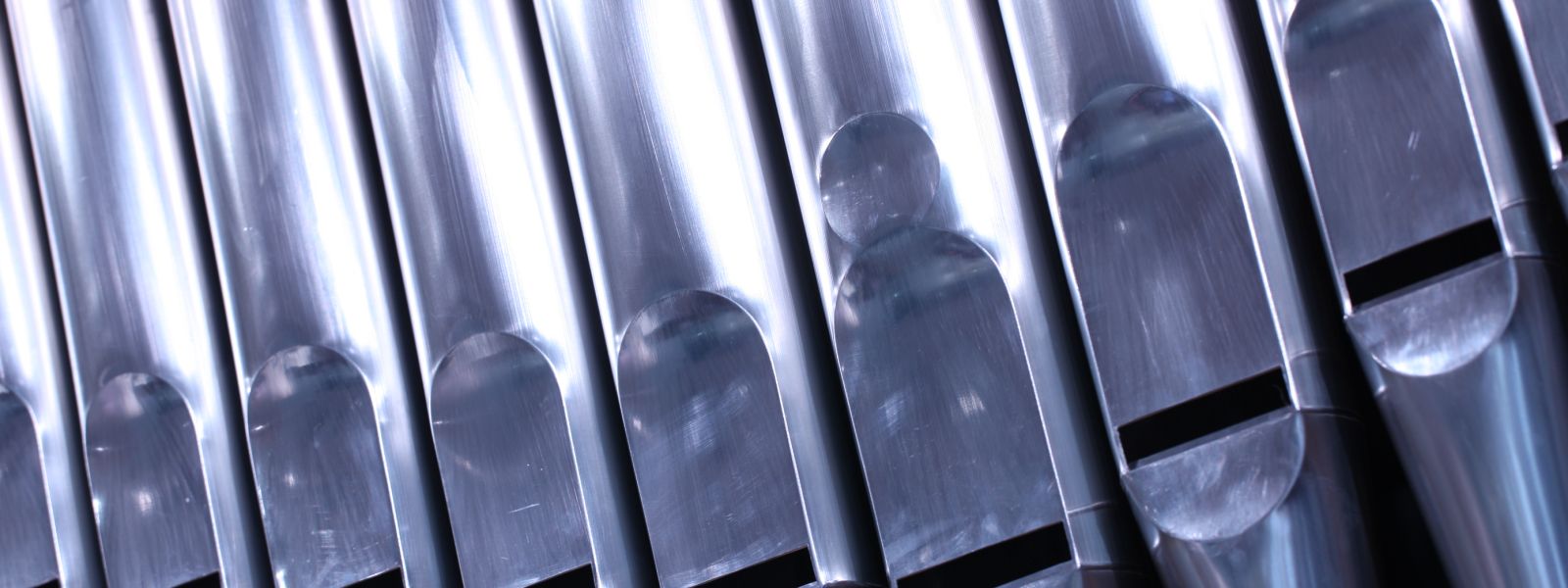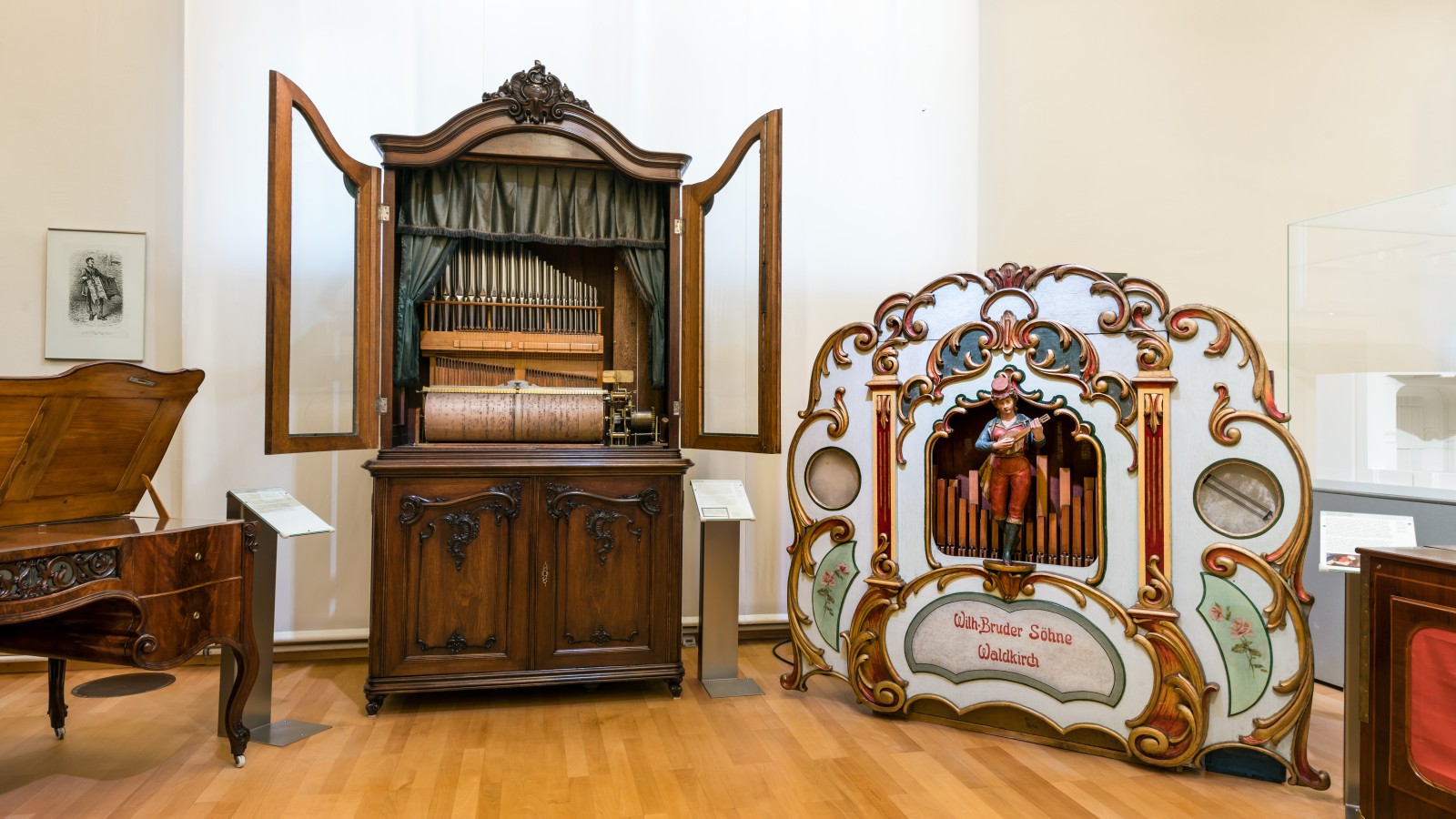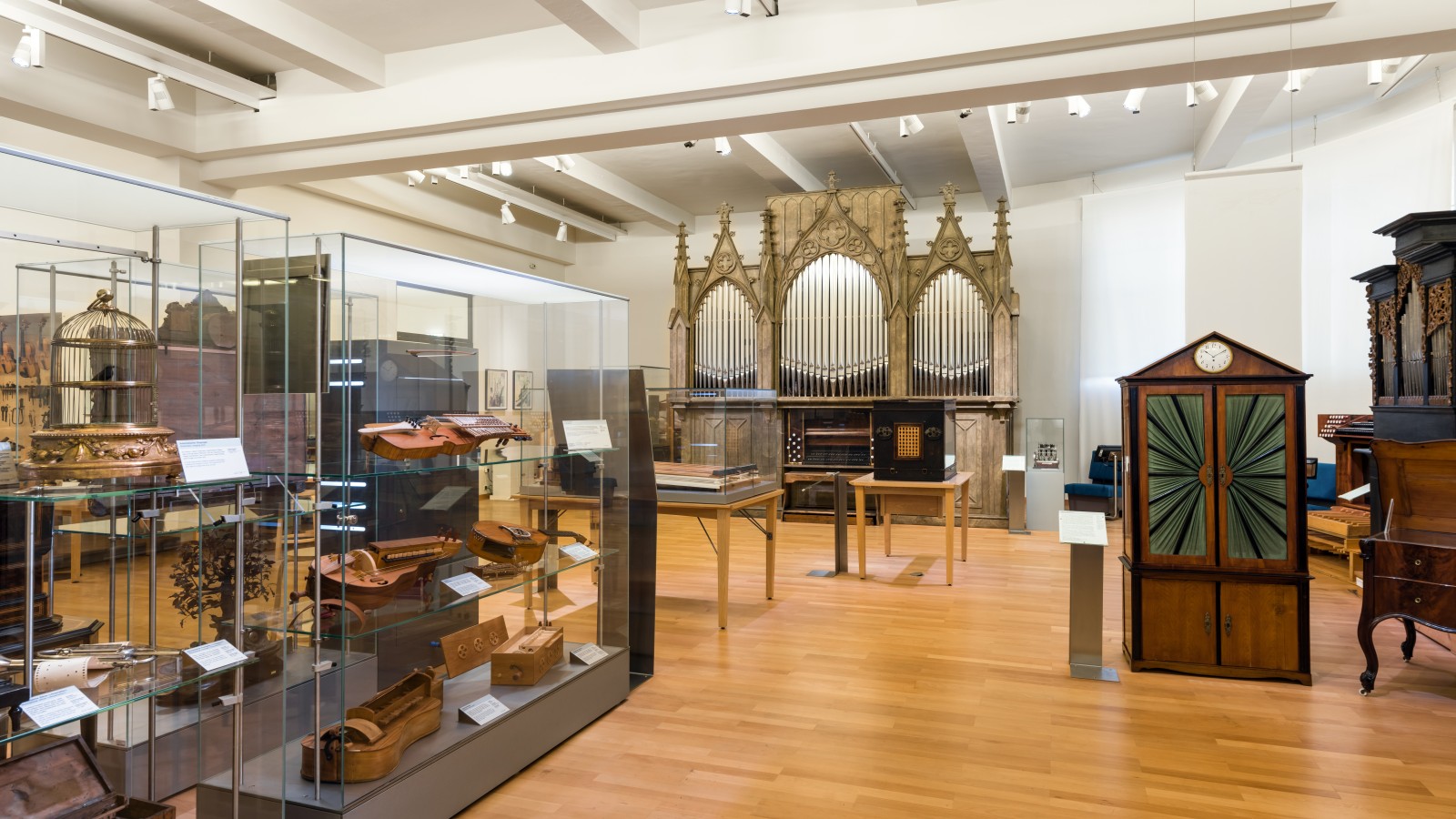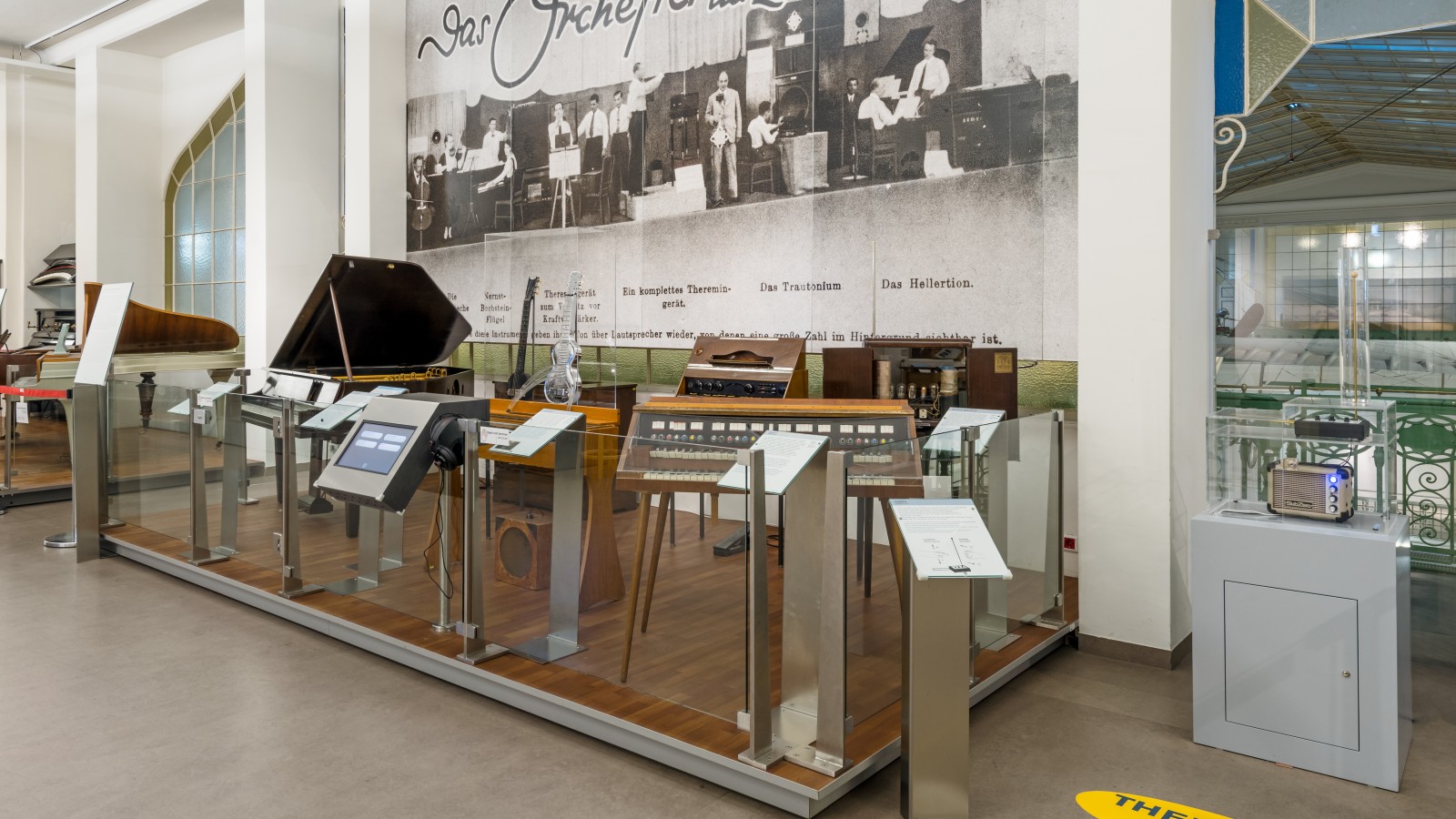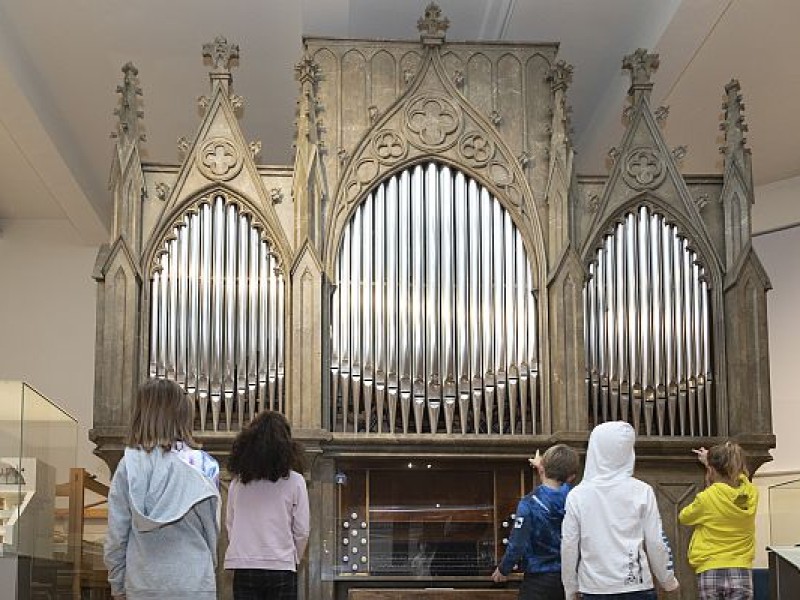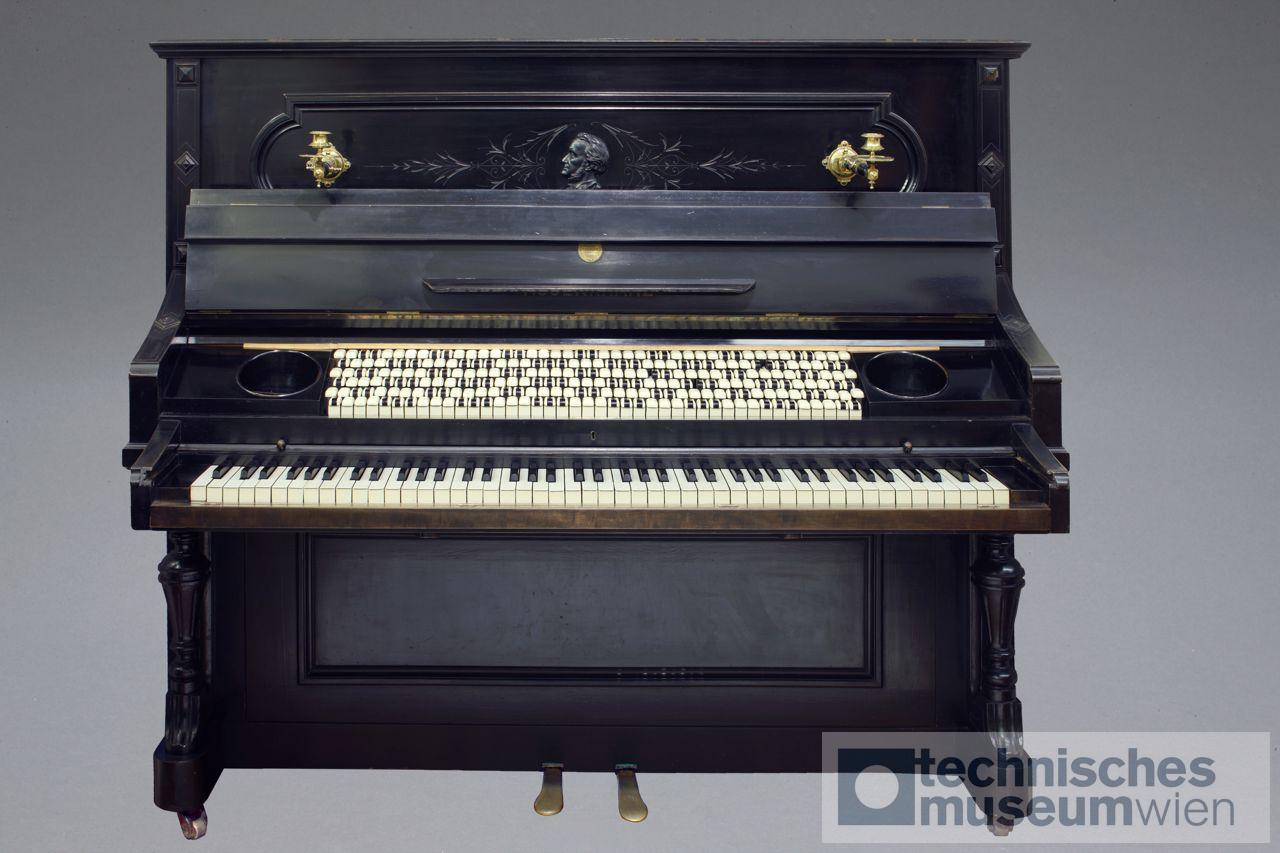What machines were invented to play music and what are their components? Who operated these devices? Did they instantly make everyone a musician? The Musical Instruments exhibition area tells stories of highly specialised craftspeople, musical instruments and music machines. And, since musical instruments are meant to be heard, many examples are offered as sound and film recordings.
In the Piano-Making Workshop, you can see what the components of a piano are and what tools are needed to make one. Before the piano in its current form conquered the world, other keyboard instruments such as the clavichord, harpsichord or tangent piano were played. The area around the exhibition’s largest instrument, the Buckow organ of Vienna’s Hofburgkapelle (Imperial Court Chapel), is dedicated to organ-building and producing sound through pipes. A small corner houses the Violin-Making Workshop, showcasing unique historical objects. Mechanical musical instruments operated by a crank, pedal or electric mechanism can play music by themselves. To do so, they need to be controlled – by a punched tape, a punched card or a pinned barrel. Music boxes, barrel organs, musical clocks and self-playing pianos are technical marvels that are on display here. The presentation also includes the physharmonica, accordion, harmonica and pump organ – all of these are instruments in which sound is produced by thin strips of metal called “reeds”.
The newest part of the exhibition area is all about electronic musical instruments. Synthesisers and their “great-grandparents”, technologies like sampling and sequencing, the MIDI standard, computer music and software instruments show the rapid development of musical instruments in the 20th and 21st centuries.
Teenagers & Adults
